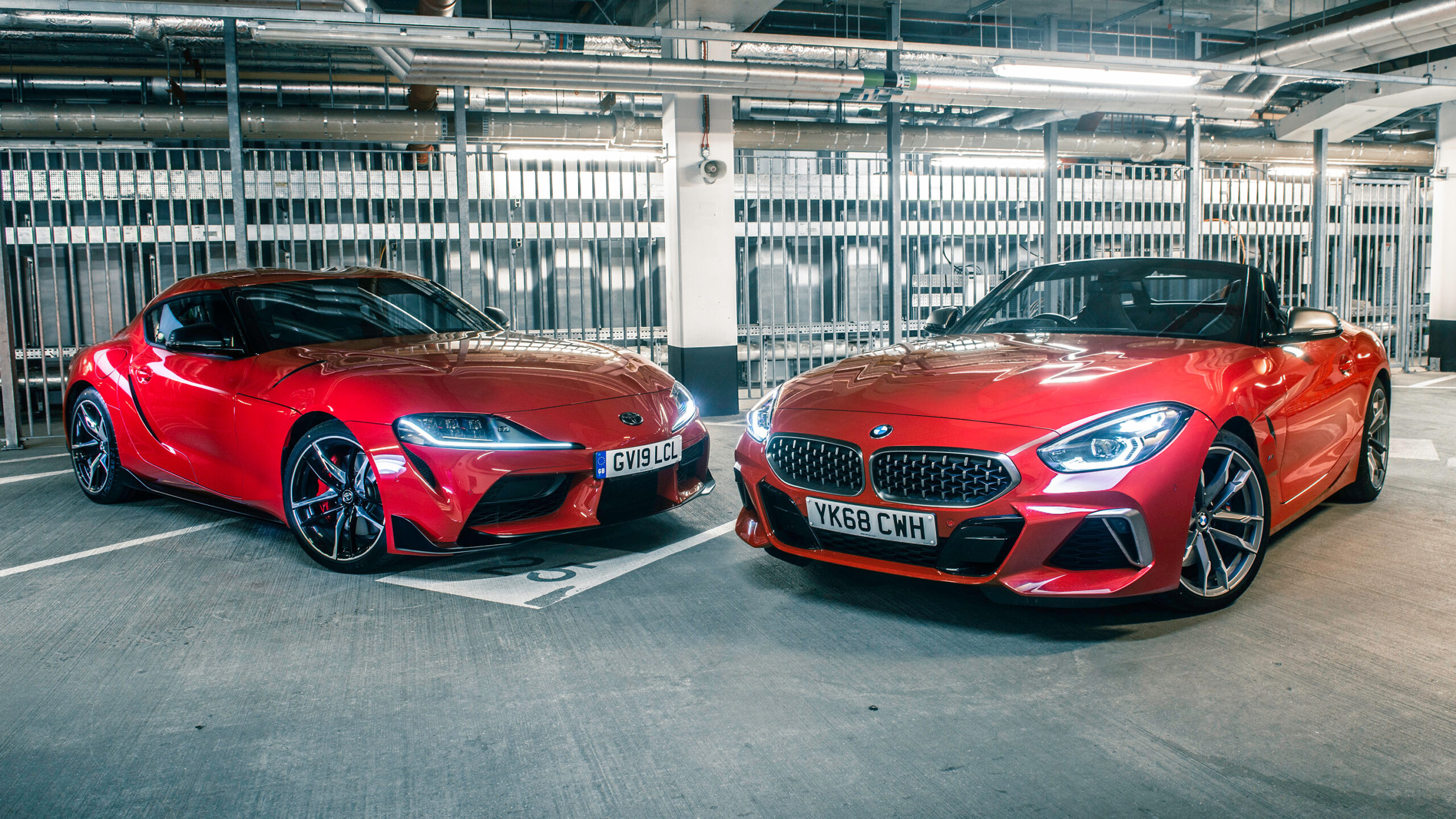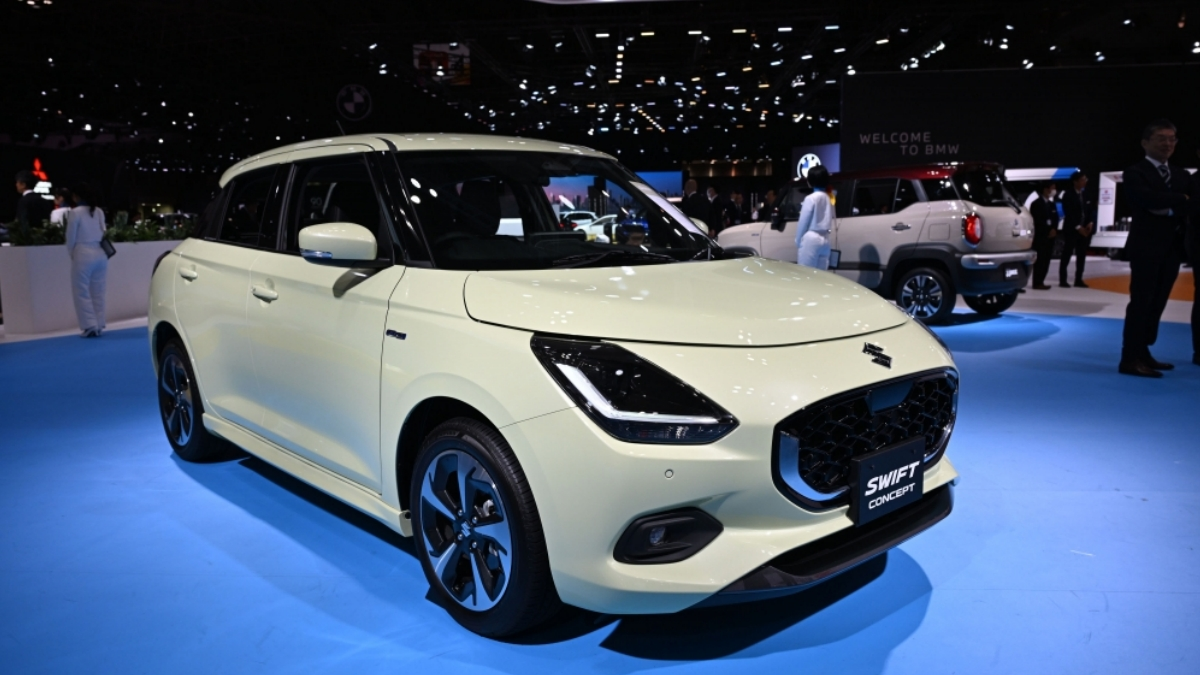Distinct Exteriors, Shared Foundations: A Closer Look
The relationship between the 2020 BMW Z4 and the 2020 Toyota Supra is a fascinating tale of collaboration. Born from an agreement to share development costs, Toyota sought BMW’s expertise in inline-six engines, crucial for the Supra’s legacy. In return, BMW leveraged the partnership to revive its beloved Z4 roadster, marking a strategic move for both automakers.
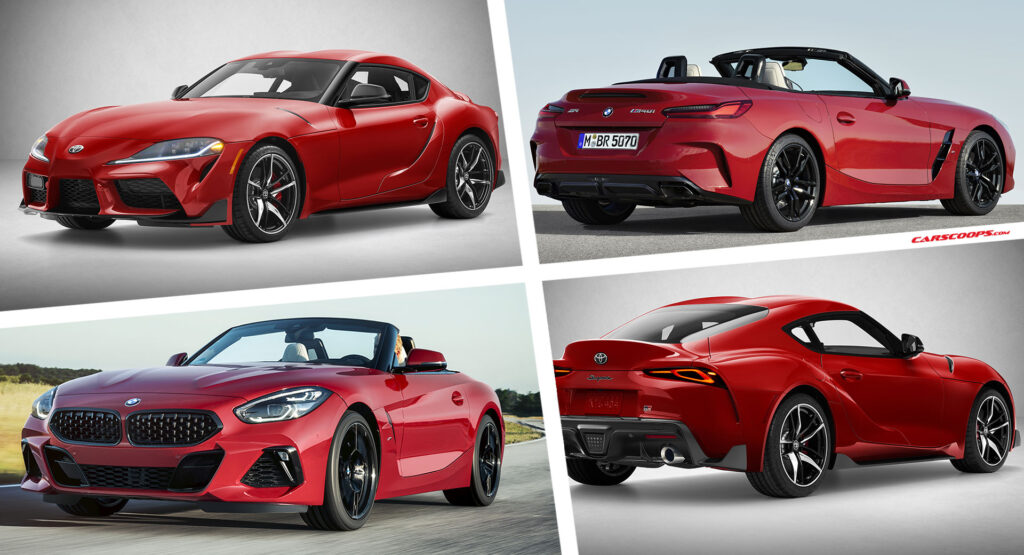
Sibling Rivalry: Exploring the Shared DNA and Unique Personalities of the Toyota Supra and BMW Z4
Toyota has experience in collaborative ventures, having previously co-developed the 86/BRZ with Subaru. Partnering with BMW to create the Supra was another successful endeavor. How closely related are the Supra and Z4? They share a platform, powertrain, and are manufactured at the same facility in Graz, Austria, by Magna Steyr. While much of their underlying technology is identical, their visible characteristics diverge significantly. The BMW Z4 is exclusively available as a convertible, boasting a sleek, redesigned exterior compared to its predecessor. In contrast, the Toyota Supra is offered solely as a coupe, drawing inspiration from the Toyota FT-1 concept unveiled at the 2014 Detroit Auto Show.
Performance Showdown: BMW Z4 M40i vs. Toyota GR Supra – Power, Pricing, and Value Compared
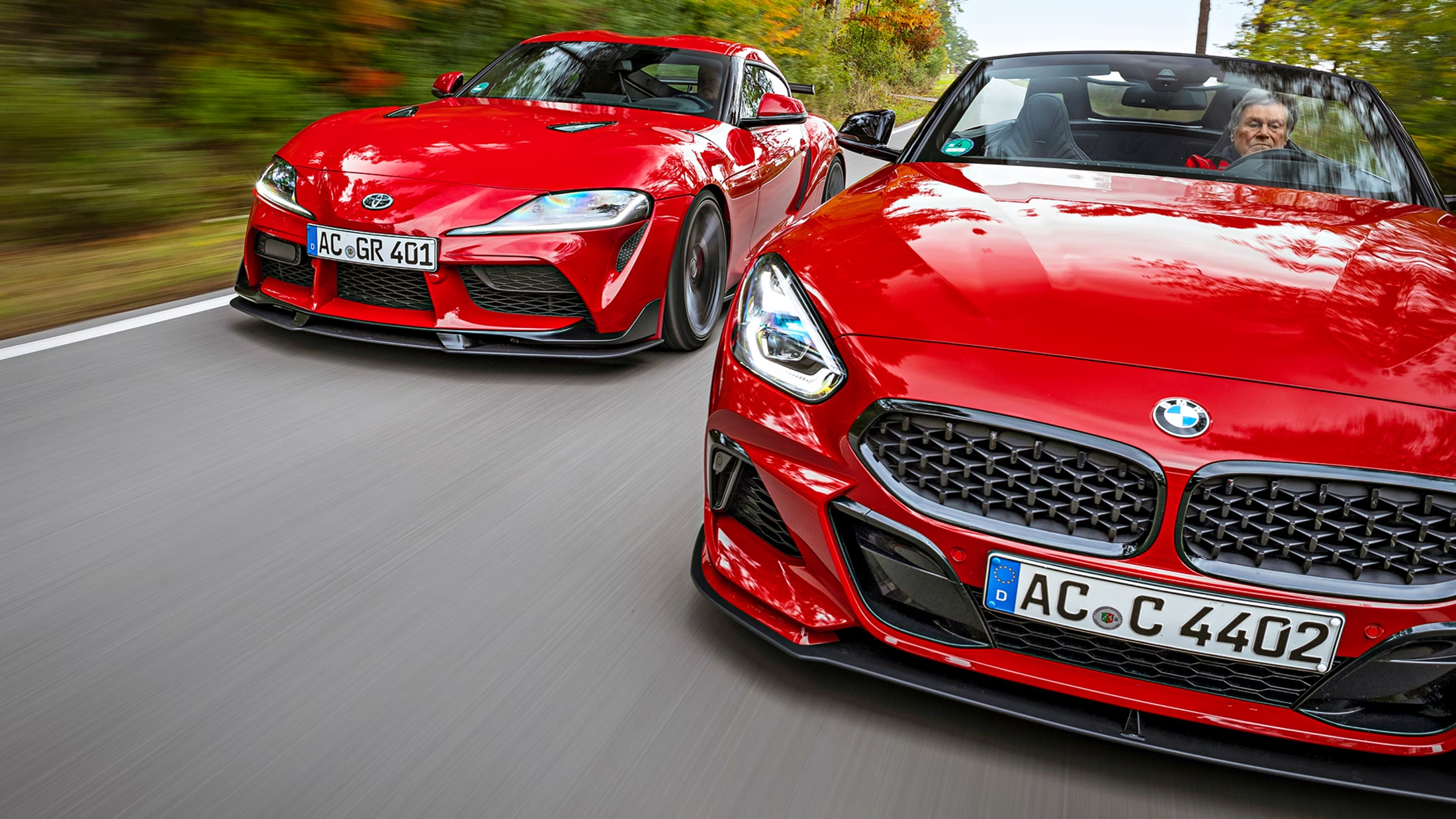
While the Z4 is available with a standard 2.0-liter turbo four-cylinder engine producing 255 hp and 295 lb-ft of torque, we opted for the M40i model in this comparison to directly compare the same engine across both cars. The BMW Z4 M40i is equipped with a 3.0-liter turbo inline-six engine that delivers 382 hp and 368 lb-ft of torque to the rear wheels via an eight-speed automatic transmission. Our test vehicle featured additional options such as the Driving Assistance, Premium, and Executive packages, totaling approximately $4,500 in extras, resulting in a tested price of $73,295.
The 2020 Toyota GR Supra Launch Edition shares the same 3.0-liter turbo inline-six engine, producing 335 hp and 365 lb-ft of torque in this Japanese sports car. It uses the same eight-speed automatic transmission found in the Z4, delivering power to the rear wheels. One notable distinction lies in pricing; our Supra included the Driver Assist package, adding $1,195 to bring the total as-tested price to $57,375.
The base price of the Z4 M40i is higher than the as-tested price of our Supra, putting the Z4 at a disadvantage. Considering the Supra incorporates numerous BMW features, Toyota strategically priced it competitively. Interestingly, the four-cylinder Z4 is only approximately $5,000 cheaper than the base model of the Supra.
Behind the Wheel: Comparing the Driving Dynamics of the Toyota Supra and BMW Z4 M40i
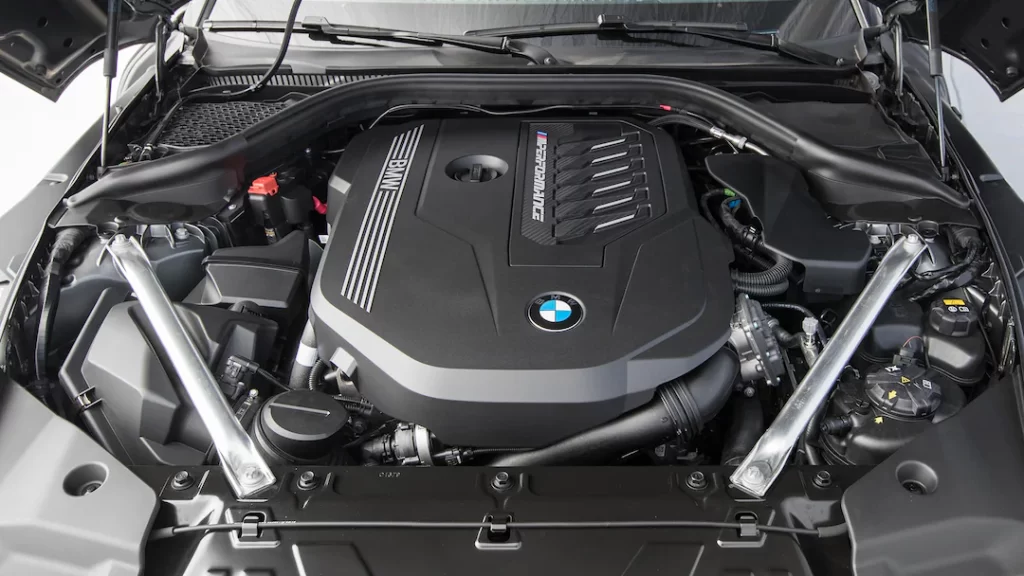
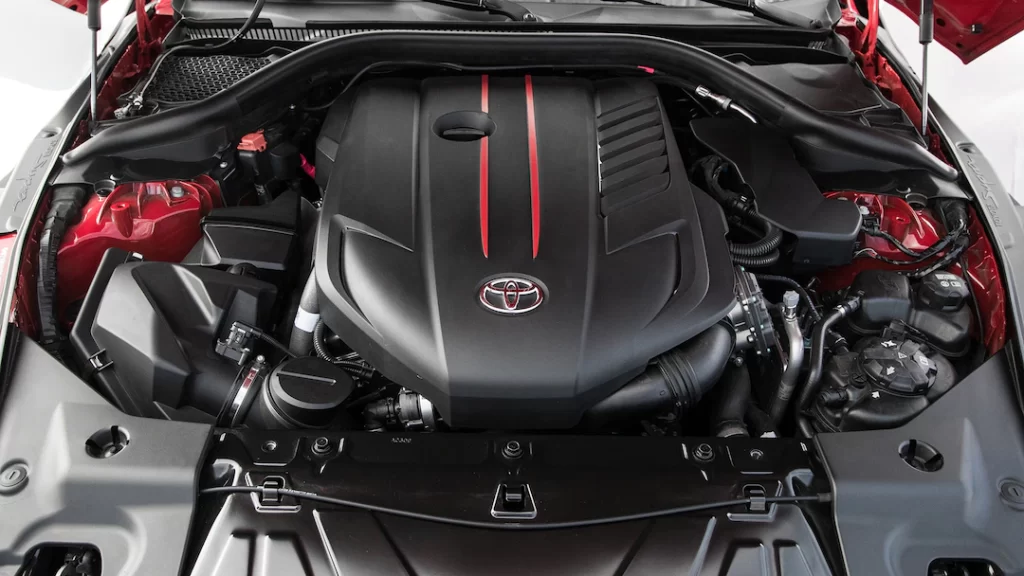
Associate online editor Duncan Brady took the Supra for a drive through twisty roads near Tehachapi, California, surrounded by windmills. He observed that while the Supra felt slightly less powerful than the Z4 at full throttle, he acknowledged that this difference was often not very noticeable. Brady also noted the unique sound of the Supra, which stands out for a Toyota. Activating Sport mode unleashes loud pops and snaps from the exhaust, making the sporty character evident even inside the cabin.
Despite having a hard top, the Supra proves to be noisy on rough pavement, with significant tire noise penetrating the cabin. Throughout our test drives, the Toyota’s interior exhibited occasional creaks from the infotainment screen and dashboard. “There’s a pretty unpleasant rattle when you turn up the stereo and the bass kicks in hard,” Brady remarked.
Despite these minor drawbacks, the Supra delivers an enjoyable driving experience. This two-seater excels on both twisty roads and highways, showcasing strong engine performance. Activating Sport mode enhances the transmission’s responsiveness, ensuring quick and precise shifts. While there is a slight hint of turbo lag, acceleration remains robust once in motion. The engine’s torque feels limitless—push the throttle at high speeds, and the Supra swiftly downshifts to deliver ample power.
The Supra’s steering offers excellent balance and responsive road feedback. It feels firmly planted with strong grip, though there were a few occasions where its rear end playfully drifted, adding to its spirited driving dynamics.
Despite feeling slightly more powerful than the Supra, both cars achieved a 0-60 mph time of 3.9 seconds during our testing. At full throttle, the Z4 only marginally outpaced the Supra on the quarter-mile, completing it in 12.4 seconds at 112.0 mph compared to the Supra’s 12.5 seconds at 111.2 mph. These performance metrics translate similarly in real-world driving scenarios.
The Bavarian model carries an additional weight of 259 pounds, which contributes to its relatively similar performance compared to the Japanese counterpart despite having more power. However, in practical terms, the Z4 M40i offers a distinct experience with its convertible top down. The Z4 demonstrates superior handling over the Supra, providing more responsive steering and enhanced feedback. Its ride is notably sportier—potentially too aggressive in Sport Plus mode, but well-balanced and refined in Sport mode.
“This engine is truly exceptional,” Brady commented on the Z4’s powerplant. “It delivers excellent throttle response and a more muscular sound, distinct from the typical metallic tone of BMW inline-sixes.” Despite its impressive engine sound, the Z4 lacks the same distinctive pops and crackles as the Toyota. The Z4 also distinguished itself with superior braking performance, stopping from 60 mph in just 101 feet, compared to the Supra’s 106 feet. Throughout our testing, the BMW exhibited a more responsive brake pedal feel than its Japanese counterpart. Additionally, unlike the Supra, we observed less tire noise inside the BMW, even though it features a soft top. This raises questions about why Toyota didn’t prioritize more investment in noise, vibration, and harshness (NVH) reduction.
Inside the Cockpits: Contrasting the Interiors of the BMW Z4 M40i and Toyota GR Supra
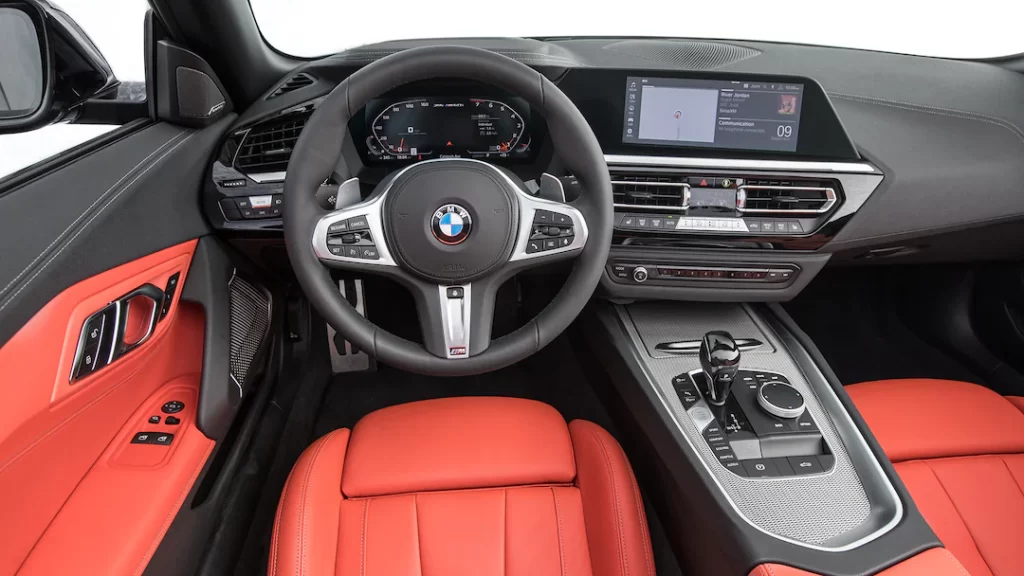
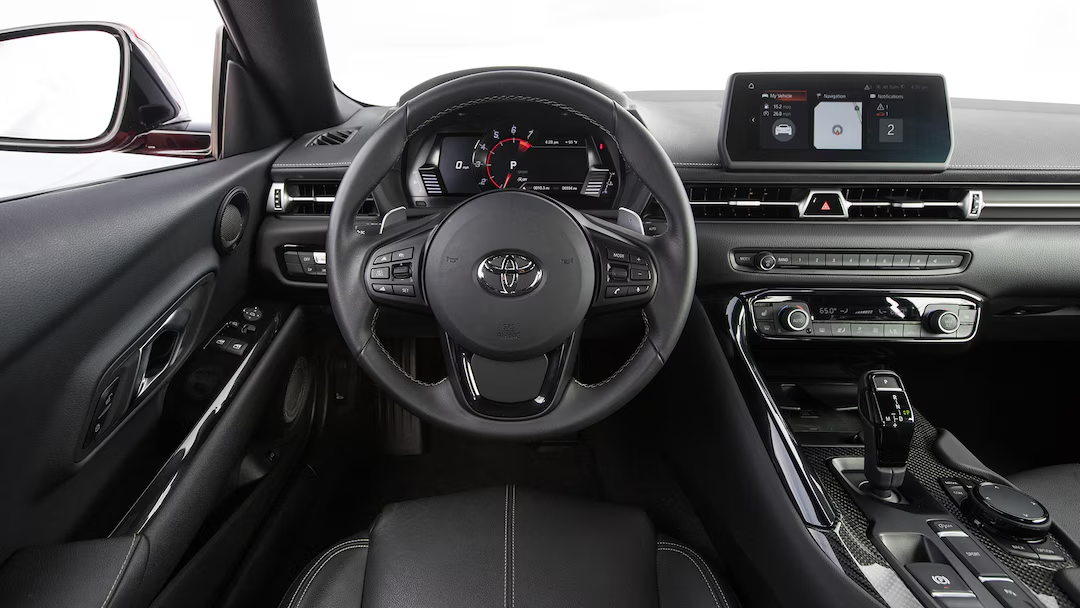
While these cars share similar mechanical foundations, their interiors couldn’t be more distinct. The BMW Z4 exudes luxury with its Magma Red Vernasca leather upholstery, adding a premium touch that complements its upscale persona. Equipped with a 10.25-inch screen featuring BMW’s latest iDrive infotainment system, the Z4 offers sleek graphics and intuitive control via a large knob near the gear shifter. Initially including wireless Apple CarPlay, BMW requires additional payment after the first year. The Executive package, priced at $2,500, enhances the experience with ambient lighting, adaptive LED headlights, auto high-beams, and a powerful Harman Kardon surround sound system. Although the interior is generally tasteful, critiques include the desire for improved trim on the plastic center console and the absence of seat cooling in a vehicle exceeding $70,000.
Conversely, the Toyota Supra’s interior lacks the vibrant color contrasts found in its wild exterior design. The predominantly black-on-black interior feels somewhat mismatched, despite borrowing fonts, switchgear, and the infotainment system directly from BMW. Toyota has made minor adjustments, such as incorporating a different shifter. Featuring an 8.8-inch touchscreen operable via a knob, the Supra’s infotainment system utilizes a previous version of BMW’s iDrive, albeit with standard wireless Apple CarPlay in the 3.0 Premium trim without subscription fees. Our evaluation highlighted amenities like navigation, a wireless phone charger, and a 12-speaker JBL audio system, though preference leans toward the Z4’s superior Harman Kardon setup. Notably, the Supra’s carbon-fiber trim on the center console surpasses the BMW’s plastic counterpart in aesthetic appeal.
